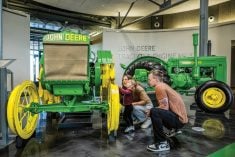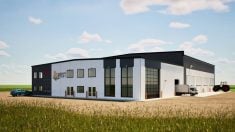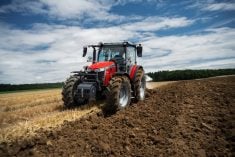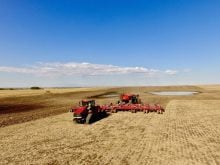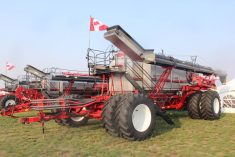It sort of looks like a combine. But not like one you’ve ever seen before. The Tribine, which was officially introduced to the public at the U.S. Farm Progress Show in August, is the blending of a rotary combine threshing body with a 1,000-bushel grain cart. The result, said Greg Terjesen, Tribine’s VP of sales and marketing, is a machine that pushes combine technology and productivity into the 21st century.
“Really, if you look at the (combine) industry, it hasn’t changed much since the Second World War,” he said as he sat next to the first production model Tribine at the company’s display during the show.
The Tribine concept has been around for a while, and the budding manufacturing company behind it has shown a prototype at a major farm show before. It first appeared at the Ag Connect Expo in Kansas City, Missouri, in 2013. Back then, prototype number four, the one on display, was based on a Gleaner combine body modified to work with the rear grain tank. When I spoke with company owner Ben Dillion at that time, he said he hoped to interest one of the major brands in the concept and licence them to produce it.

That didn’t happen. So Dillon has chosen to begin commercial production of the Tribine with his own company. But under its skin, the current machine is considerably different than the concept machine that appeared in Kansas City. It incorporates the firm’s own newly developed threshing body design, using one of the largest rotors in the industry.
“Most of our engineers are part-time farmers,” explained Terjesen. “They’ve all worked for one of the other major manufacturers of combines. These guys started with a clean sheet of paper, and almost 18 months to the day, the first machine rolled off the assembly line”
Terjesen believes that aside from a gain in harvesting productivity, the Tribine concept also helps improves field conditions.
“We were not only looking for more capacity, we were looking for less compaction,” he continued. “One of the reasons the machine is designed the way it is, is to lessen compaction. Here you have a machine that weighs 42,000 pounds, but it only makes two tracks. Add a tractor and grain cart to that and all you’re doing is compacting the soil.”

In the cab
Inside the cab, things look almost as different as they do on the outside.
“The other thing we’ve done is eliminated the steering wheel,” he added. “We’ve gone with a single joystick control. The farmer is always looking forward and to the sides, because that’s where the header is. By getting rid of the steering wheel, we could put a glass bottom in the cab, so they can look down and see exactly what’s going on.”

The joystick steering concept has already appeared widely on equipment in the construction sector.
“We’ve had that machine out testing with farmers, listening to customers, trying to get their input on what we should do better to leapfrog the competition, which is what is really our goal,” said Terjesen.
Initial marketing efforts will be concentrated on the U.S. Midwest around the Kansas manufacturing plant where the Tribine is being built.
“Our target production is conservative for next year, because we are going to be selling and servicing the machines directly,” he said. The idea is not to get rich overnight. I would rather grow a steady business and take care of customers.”
“We’re going to go into Canada in the fourth quarter of next year (2017). I’ve had a lot of interest from Canadian customers, especially from Western Canada. My biggest concern is I don’t have anybody to service the machine in Canada. But looking at our marketing plan, we will be looking at Canada next year.”
Read Also
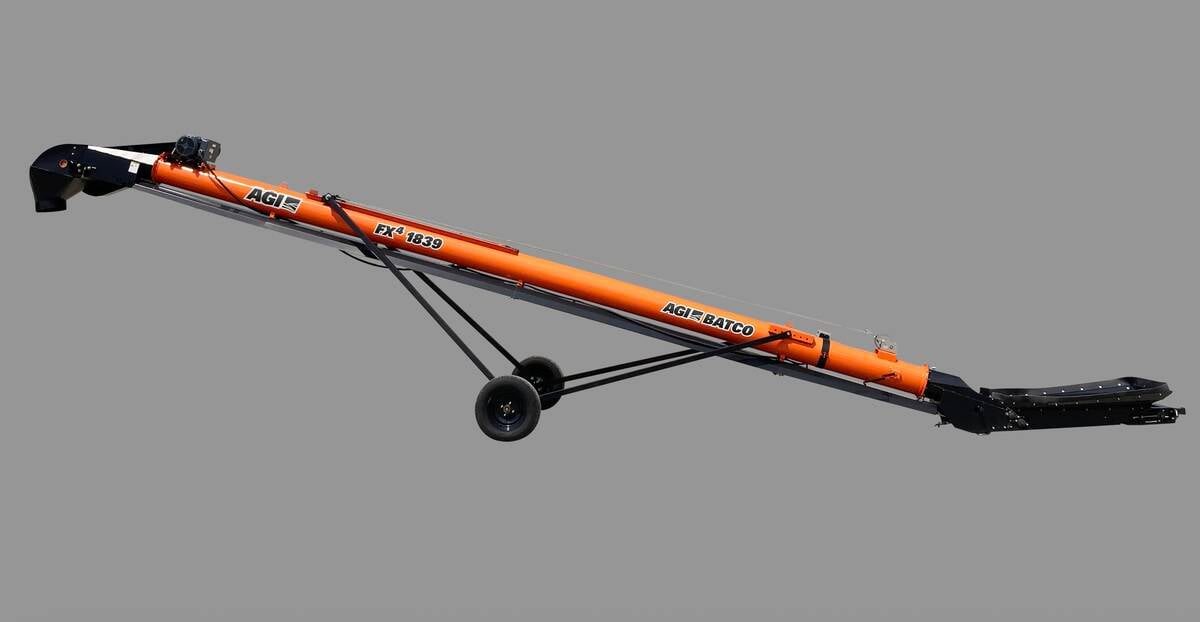
AGI rolls out two new high-throughput grain conveyors
For grain growers needing to move a lot of bushels quickly, AGI offers two new high-throughput conveyors: the gas-over-hydraulic FX4 SP, and the top-drive electric FX4 18S.
So what will a Tribine retail for? Terjesen won’t provide a hard and fast number. “The market price we’re targeting is the average price of a combine and a grain cart,” he said.






